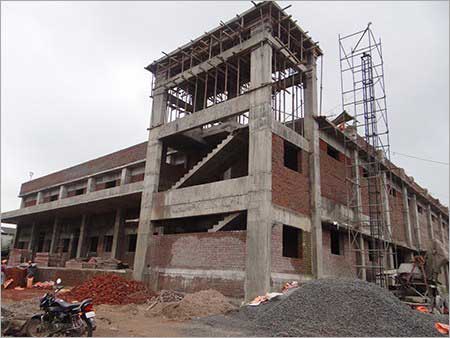Table of Contents
Introduction
In the fields of civil engineering, unit conversion of various measurements is must have knowledge now-a-days. Therefore, we must know the basic conversion of different units. A unit of measurement is a definite magnitude of a quantity, defined and adopted by convention or by law, that is used as a standard for measurement of the same kind of quantity. Any other quantity of that kind can be expressed as a multiple of the unit of measurement.
For example, the length is a physical quantity. A metre is a unit of length that represents a definite predetermined length. When we say 10 metres (or 10 m), we actually mean 10 times the definite predetermined length called “metre”. Measurement is a process of determining how large or small a physical quantity is as compared to a basic reference quantity of the same kind. (Source: Wikipedia)

Importance of Unit
Any physical quantity has two parts- 1. Magnitude and 2. Unit. Magnitude is the numerical value of the measurement, while the unit is a standard for measurement of the same kind of quantity. No measurement can be expressed without a unit. For the above example, if we say the length of a wooden plank is 10 (without unit), we can not justify the actual length of the plank. It may be 10 metres, 10 feet or 10 inches. If we give the unit, we can understand the proper length. Therefore, it is necessary to include the unit of the measurement along with the magnitude. However, in some cases, where the quantity is expressed as the ratio of two similar quantities, that quantity has no unit. For example- Specific Gravity.
(Also Read: 150 AutoCAD Command and Shortcut List With PDF)
Systems of Unit Measurement
There are different standards and unit systems used in the world. Few common systems of measurements used in Engineering fields are:
CGS Unit System
In the CGS unit system, the length is measured in centimetre, mass is measured in gram and time is measured in second.
| Unit | Abbreviation | To Measure |
| Centimetre | cm | Length |
| Gram | g | Mass |
| Second | s | Time |
FPS Unit System
In the FPS system, the length is measured in feet, mass is measured in pound and time is measured in second.
| Unit | Abbreviation | To Measure |
| Feet or Foot | cm | Length |
| Pound | g | Mass |
| Second | s | Time |
SI Unit System
Different units are used in different countries for the measurement of physical quantities. In the US, pound metrics is used commonly for indicating mass. But in India, the kilogram is used to measure the same physical quantity. To remove these differences, the SI (International System of units) system was standardized in 1960. In the SI unit, 8 physical quantity is assumed to be the Fundamental Unit or Basic Unit.
| Unit | Abbreviation | To Measure |
| Metre | cm | Length |
| Kilogram | g | Mass |
| Second | s | Time |
| Ampere | A | electric current |
| Kelvin | K | thermodynamic temperature |
| Mole | mol | amount of substance |
| Candela | Cd | luminous intensity |
| Radian | rad or c | Angle |
(Also Read: List of Tests for Bitumen as per Indian Standard)
Unit Conversion
Conversion of Length

| Imperial units of measurement | 1 foot (ft or ‘) = 12 inches (in or “) 1 yard (yd) = 3 feet 1 mile = 1,760 yards |
| Metric units of measurement | 1 centimetre (cm) = 10 millimetres (mm) 1 metre (m) = 100 centimetres 1 kilometre (km) = 1,000 metres |
| Converting from Imperial to metric measurements | 1 in = 25.4 mm 1 in = 2.54 cm 1 ft = 0.3048 m 1 yd = 0.9144 m 1 mile = 1.6093 km |
| Converting from metric to Imperial measurements | 1 mm = 0.0394 in 1 cm = 0.3937 in 1 m = 3.2808 ft 1 m = 1.0936 yd 1 km = 0.6214 miles |
Conversion of Area

| Imperial units of measurement | 1 sq foot (ft2) = 144 sq inches (in2) 1 sq yard (yd2) = 9 sq feet 1 acre = 4,840 sq yards 1 sq mile = 640 acres |
| Metric units of measurement | 1 sq cm (cm2) = 100 sq mm (mm2) 1 sq metre (m2) = 10,000 sq cm (cm2) 1 sq km (km2) = 100 hectares |
| Converting from Imperial to metric measurements | 1 in2 = 6.4516 cm2 1 ft2 = 0.0929 m2 1 yd2 = 0.8361 m2 1 acre = 4046.9 m2 1 mile2 = 2.590 km2 |
| Converting from metric to Imperial measurements | 1 cm2 = 0.1550 in2 1 m2 = 10.7643 ft2 1 m2 = 1.1960 yd2 1 m2 = 0.0002 acres (not used) 1 km2 = 0.3861 mile2 |
(Also Read: What is Geo Synthetics – Definition, Application, Limitation)
Conversion of Volume/Capacity

| Imperial units of measurement | 1 cu foot (ft3) = 1,728 cu inches (in3) 1 cu yard (yd3) = 27 cu feet (ft3) 1 pint (pt) = 20 fluid ounces (fl oz) 1 gallon (gal) = 8 pints |
| Metric units of measurement | 1 cu decimetre (dm3) = 1,000 cu cm (cm3) 1 cu metre (m3) = 1,000 cu decimetre 1 litre (l) = 1 cu decimetre |
| Converting from Imperial to metric measurements | 1 in3 = 16.387 cm3 1 ft3 = 28.3286 dm3 1 ft3 = 0.0283 m3 1 yd3 = 0.7646 m3 |
| Converting from metric to Imperial measurements | 1 cm3 = 0.0610 in3 1 dm3 = 0.0353 ft3 1 m3 = 35.3357 ft3 1 m3 = 1.3080 yd3 1 ml = 0.0352 fl oz 1 l = 1.76 pints (UK) 1 l = 0.220 gallons (UK) 1 hl = 21.997 gallons (UK) |
Download This Post:
I hope this article will help you. You may also want to see my other post from my Blog. If I have missed anything here, please let me know about that in the comment below this post.
Share it with your friends.
Happy Learning.
If you liked this article, then please help me to share this article with your friends through Facebook, Twitter, WhatsApp or Instagram. You can also find us on Facebook, Twitter, and Instagram. Also, Subscribe to our mailing list to get new post update from us. And, do me a favour, if you find this post helpful, rate a 5 star below-





